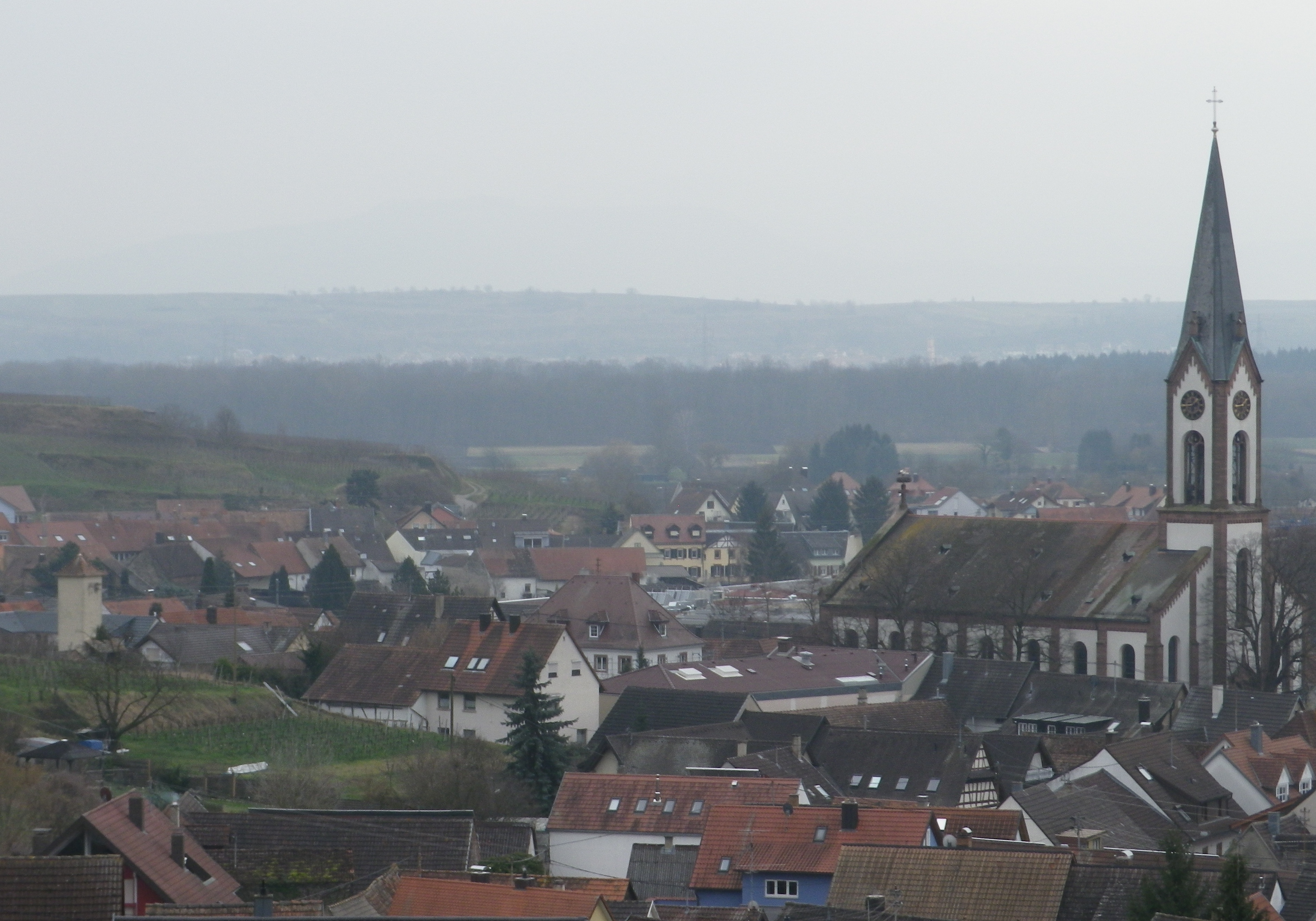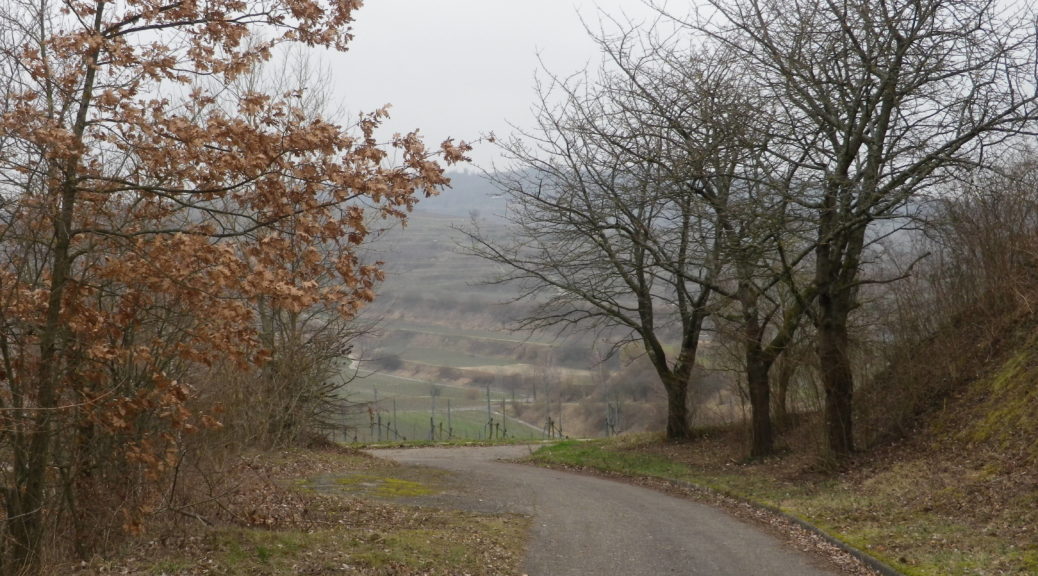Winter, Spring, Summer, Fall, a trail’s face changes with the seasons. While this is undoubtedly true for the Ihringer Winzerrunde West trail, even as I hiked it in early February, it seemed more a trail of the Spring, and for good reason: the Kaiserstuhl is consistently one of the warmest, if not the warmest area in Germany.
To be honest, I was not looking forward to seeing the trail’s winter face for a couple of reasons. First, the Ihringer Winzerrunde West trail has several inclines, as it passes through vineyards, which in addition to being sited on elevations formed by ancient lava flows, also has an extensive system of terraces throughout the area.
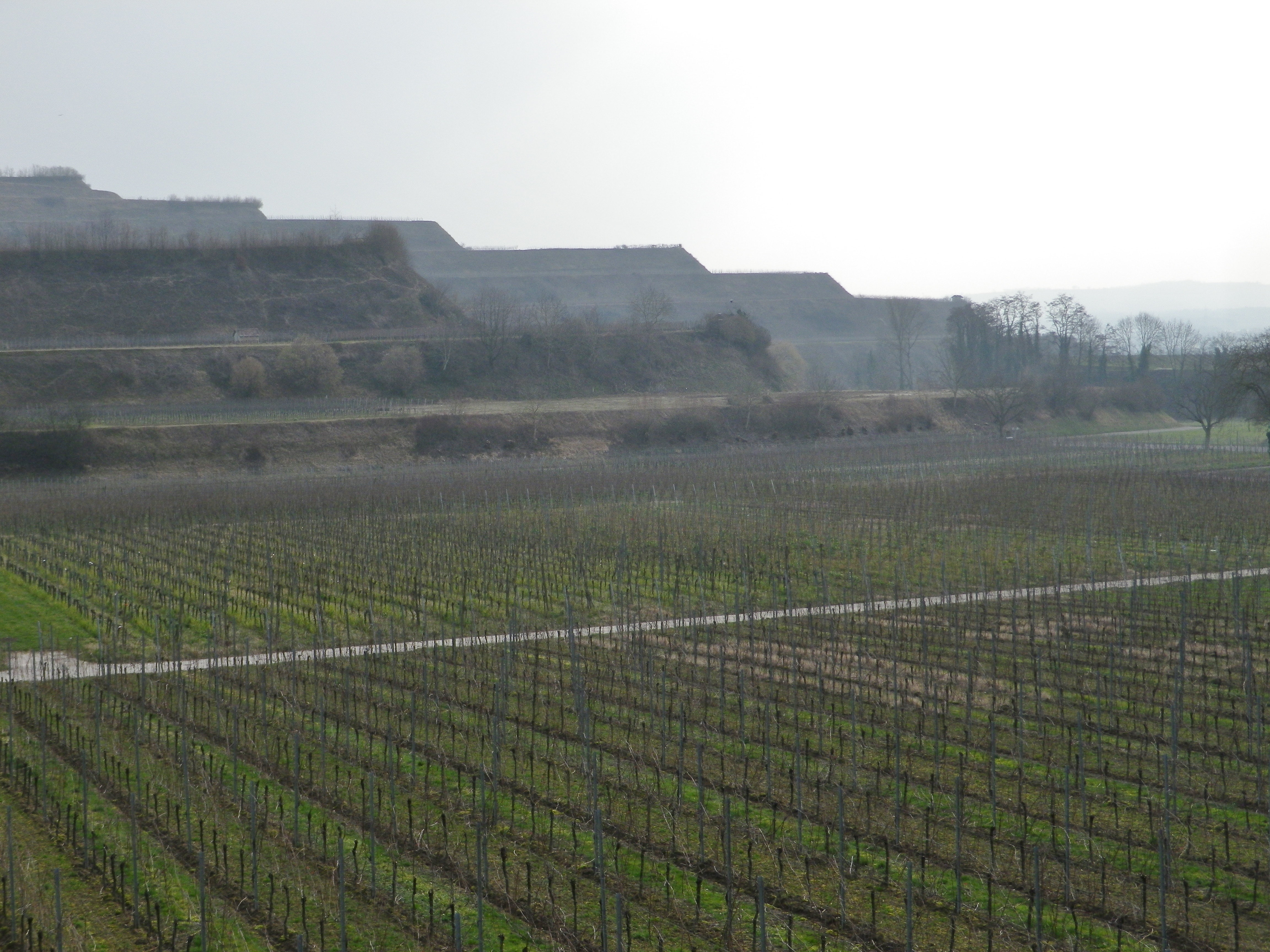
Inclines also mean declines. In this case, both were paired with some frequency. In winter, with ice on the trails, the inclines can be challenging to ascend, (think two steps forward and one slide back). On the other hand, the descents can be perilously fast. Since much of this trail was on tarmac, I would not have been able to use the traction devices I packed, as tarmac really wears them down. But – fortunately, not a problem!
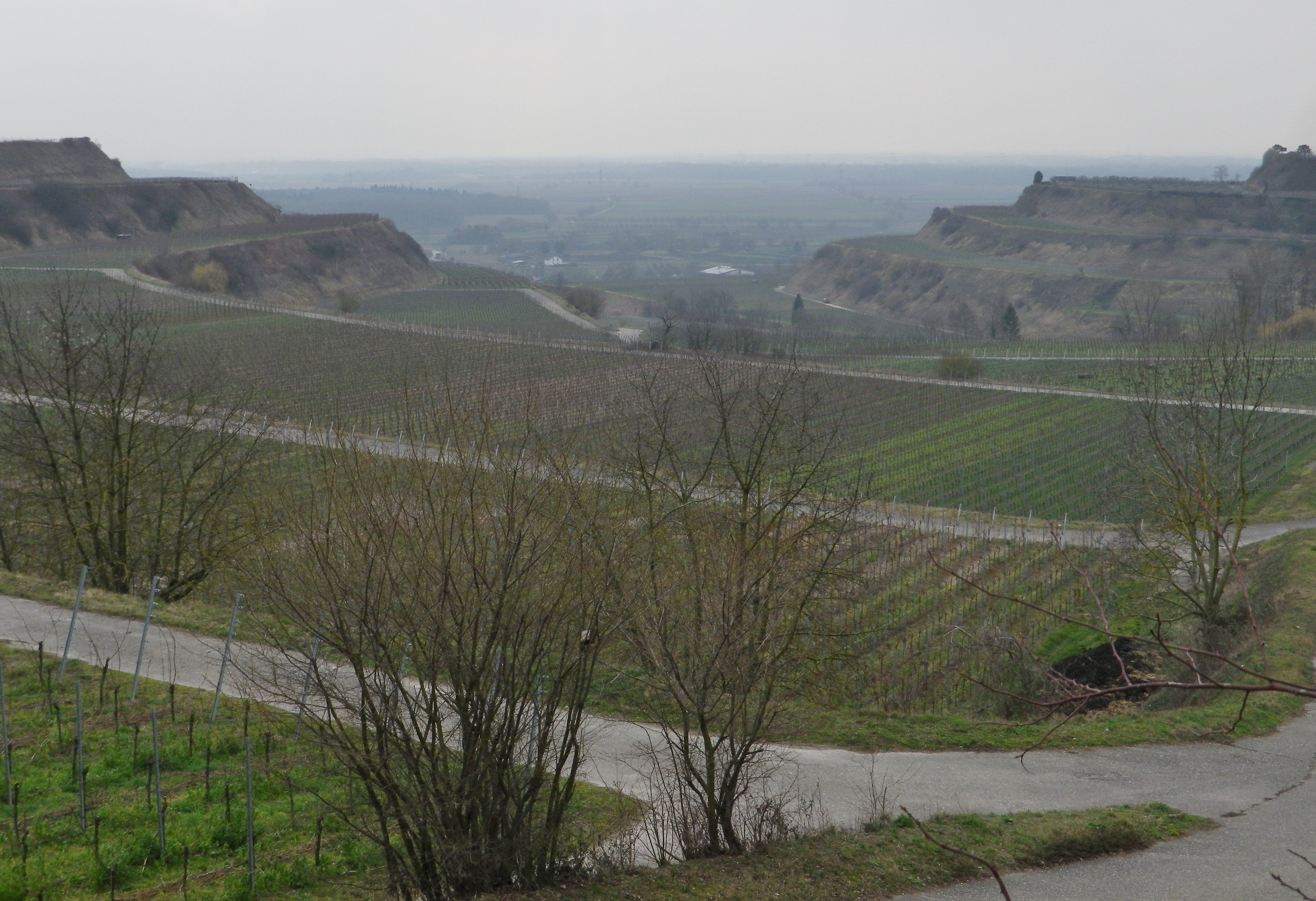
Because I was in a warm area of Germany, and because the vineyards had great southern exposure, there was absolutely no ice, not even in early February! Trees were beginning to flower, and the low, early spring flowers had already opened, adding color along the trail. No wonder the migrating Bee-eater loves this area. Warm, with deep layers of loess soil where it makes its nest, the sides of the terraces are pockmarked with old nests. Sadly, the brilliantly colored birds had not yet returned though. A photo of one of these little beauties would have been an explosion of photographic color!
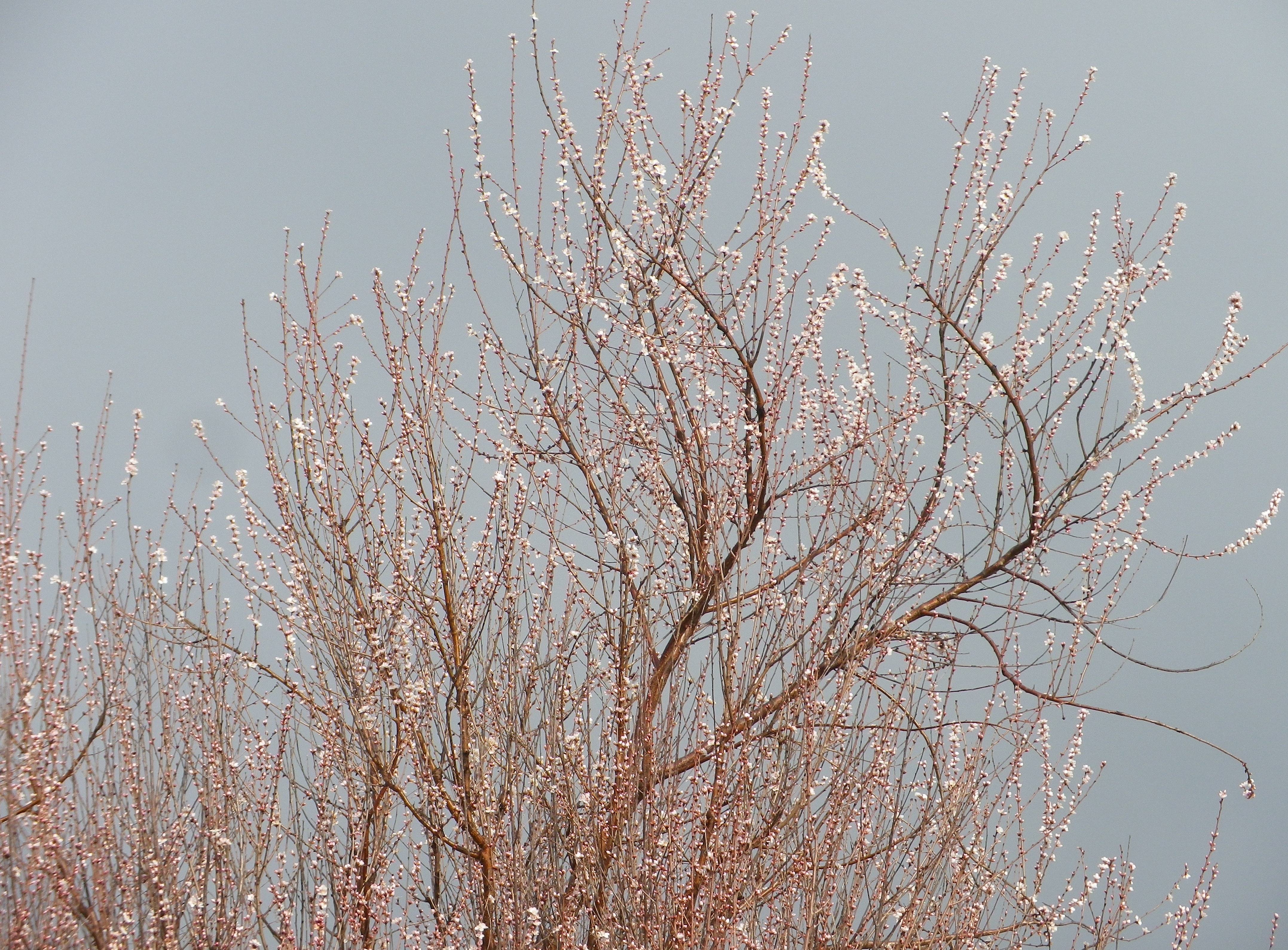
The only other color that day, aside from the green grass, was grey. While warmer than other German wine districts, the weather that day was typical of a German winter in the Rhine Valley: grey. Grey skies, and a fair amount of fog, made distant views hard to capture on camera. The Vosges Mountains in Alsace off to the west, and the hilly area of the Canton of Basel, to the south, stand out in all their blue and green glory on sunny days. The Kaiserstuhl is close enough to the southern Black Forest to be visible in just about any weather, but unfortunately none were visible on the day of the hike.
But a nice surprise was seeing the skyline of the ancient town of Breisach from the perspective to the east of the town. It is one of my favorite towns in Germany because of its history and amazing perch high above the Rhine, on the border with France. An area of relatively flat terrain separates this famous promontory from the rest of the Kaiserstuhl, which is ideal for family cycling in and around Ihringen and Breisach, and along the lower Rhine.

Just after seeing Breisach, the Freiburg Winery (Staatsweingut Freiburg) appeared through the mists. Like another winery I would visit on my return to town, Weingut Stigler, this one also had vines both here and in nearby Freiburg im Breisgau. Breisgau is another wine district in the Baden wine region, but it has fewer premier vineyards. The Freiburg Winery lay in a bowl surrounded by one of the most highly esteemed vineyards in this district: the Blankenhornsberger Doktorgarten.
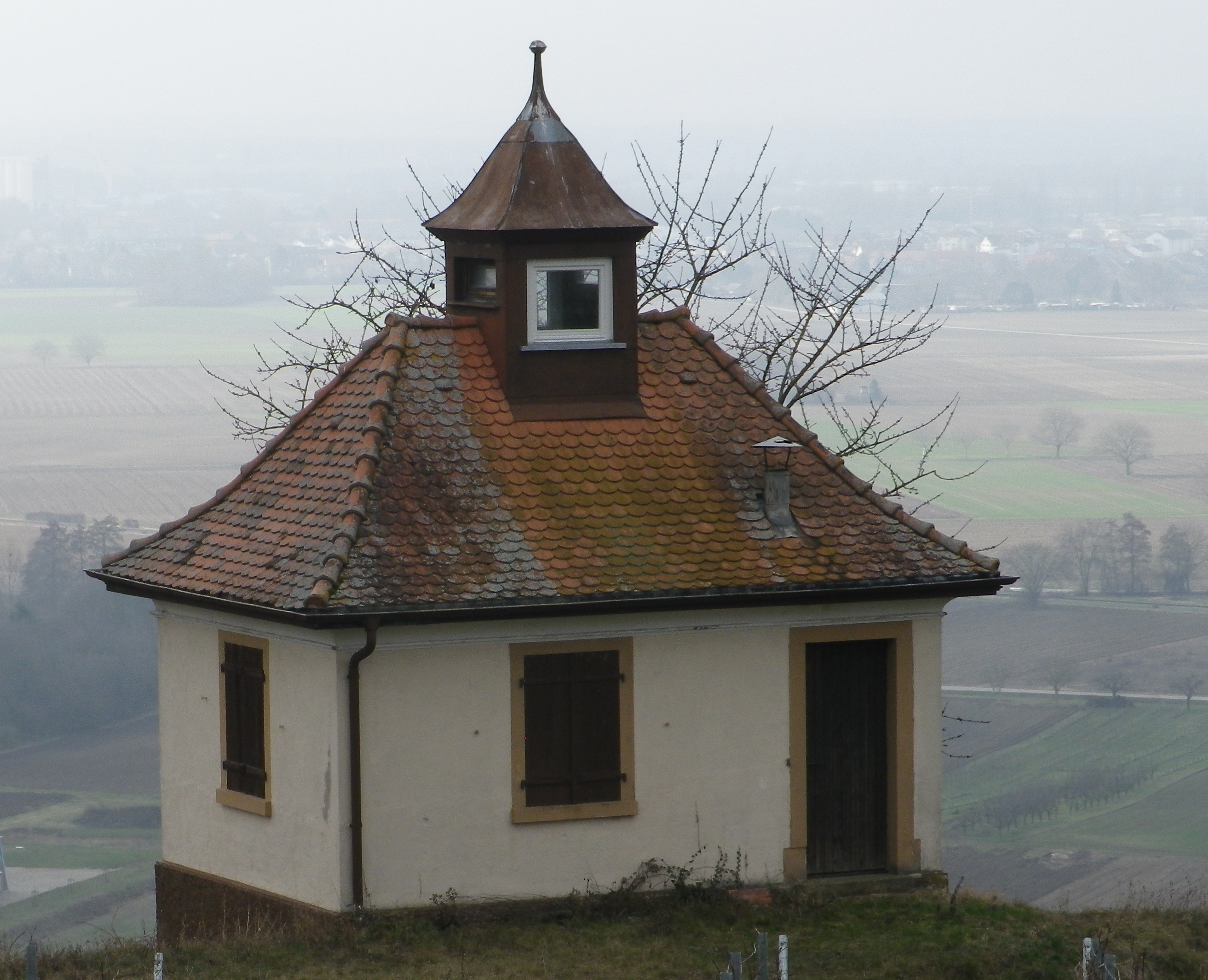
Dropping down into the bowl, then up and around the edges of terraces so precise they looked as if cut by a knife, the trail came to some old steps that took me back into town. The main streets displayed attractive shop-fronts. And the enticing windows of the wineries beckoned, at the end of yet another trail.
